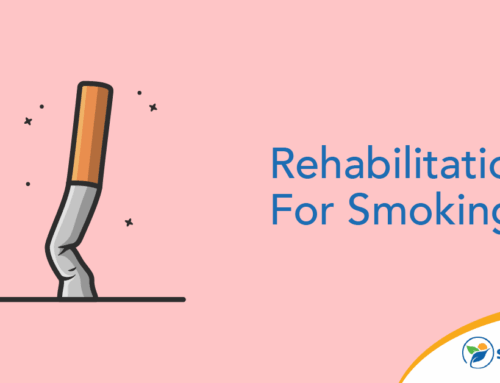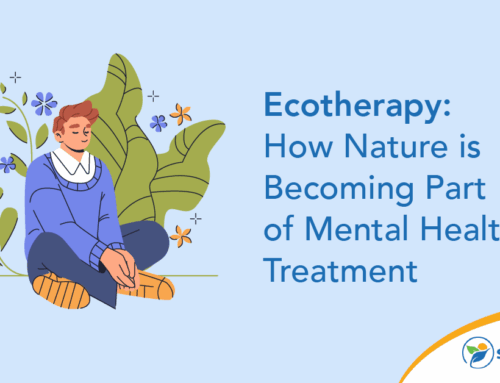Traditionally, psychotherapists would specialize and only offer one treatment approach to their clients. While eclectic therapy doesn’t refer to a specific model, the term describes practitioners who blend elements from two or more treatment modalities during sessions. Eclecticism is a versatile form of mental health treatment allowing clinicians to adapt to clients’ needs.
What Is Eclectic Therapy?
The various therapeutic modalities have typically been developed as stand-alone approaches. Therapists who favor eclectic therapy combine different therapeutic methods tailored to individual clients. This approach has been proven particularly effective in treating post-traumatic stress disorder (PTSD).
For example, a mental health professional might treat depression by integrating elements of cognitive behavioral therapy to challenge negative thought patterns and mindfulness techniques. In treating trauma, a psychotherapist could incorporate psychodynamic therapy to explore underlying unconscious processes and trauma-focused cognitive behavioral interventions to address maladaptive coping mechanisms.
Some key principles of an eclectic approach in psychology and mental health treatment may include:
- Integration. Therapists blend elements of cognitive behavioral, psychodynamic, humanistic and other approaches to create a customized treatment plan.
- Individualized treatment. One-size-fits-all theories may not always be effective. Eclectic therapists offer a personalized approach.
- Flexibility. Therapists are open to changing their approach based on client progress, feedback and evolving needs throughout the therapeutic process.
- Person-centered approach. Eclectic therapists place the client’s needs, goals and preferences at the forefront of the therapeutic process.
Rather than strictly adhering to one method, eclectic therapists draw from various techniques and theories. Some qualitative studies indicate that most therapists incorporate elements of an eclectic model into their practices over time.
Eclectic Approaches
Eclectic therapy methods encompass several treatment modalities. However, this type of mental health treatment is far from random. Your therapist may use one of several established models to deliver an eclectic approach.
- Brief eclectic therapy. As the name implies, this is a time-limited, solution-focused approach that usually combines cognitive behavioral therapy with psychodynamic theory. It aims to achieve tangible outcomes within a limited number of sessions. This method can be effective in treating symptoms of trauma and conditions such as PTSD.
- Multimodal therapy. This comprehensive approach considers the various dimensions of human functioning, including behavior, physical health, cognition and interpersonal relationships. Therapists assess each domain and select interventions tailored to the client’s unique profile.
- Cognitive interpersonal therapy. This type of eclectic therapy combines cognitive behavioral techniques with interpersonal interventions. It aims to identify and challenge negative thought patterns while addressing the client’s relationship issues.
- Transtheoretical therapy. Also known as the stages of change model, this approach identifies five phases of behavior change: pre-contemplation, contemplation, preparation, action and maintenance. Psychotherapists who adopt this model support clients through various treatment modalities at each phase of treatment.
- The three-stage model. As the name suggests, this newer approach to eclectic therapy consists of three phases in the therapeutic process. In the engagement phase, therapists establish trust and rapport with clients. The following two phases explore underlying issues and develop practical strategies for change.
Benefits and Potential Limitations
One main advantage of eclectic therapy is its flexibility. By combining several therapeutic modalities, eclectic therapists can offer treatment plans that meet their clients’ unique needs, preferences and goals. This personalized approach allows clinicians to use interventions that resonate most effectively with individual circumstances.
By embracing an integrative model, therapists can adapt interventions based on clients’ responses and progress in therapy. Flexibility ensures treatment remains responsive to clients’ evolving needs.
Therapists can try different techniques and strategies, combining elements from various theoretical orientations to address complex issues. This integrative model encourages ongoing professional development for mental health clinicians.
Despite the benefits of an eclectic approach to mental health treatment, the model has some significant drawbacks. One challenge is risking a lack of coherence in treatment planning. Maintaining consistency in sessions may be more difficult without a clear theoretical framework, potentially leading to confusion or inefficacy in treatment.
Some people might benefit from a structured treatment approach. Certain mental health issues may require a more focused or intensive intervention than eclectic therapy can provide.
The eclectic approach requires therapists to possess proficiency in multiple therapeutic modalities. While this versatility can enhance clinical competence, it also demands ongoing training, supervision and self-reflection to ensure competent and ethical practice.
Mental Health Issues Treated by Eclectic Therapists
Eclectic therapy offers a versatile model for addressing mental health issues. Common mental health concerns therapists may treat eclectically include:
- Depression. Eclectic therapists may combine cognitive behavioral interventions with mindfulness techniques. Elements of psychodynamic therapy could also be used to explore underlying issues causing depressive symptoms.
- Anxiety disorders. Eclectic options for anxiety disorders might include incorporating exposure therapy and relaxation techniques with interpersonal interventions to address relational stressors that exacerbate anxiety.
- Post-traumatic stress disorder. An integrated approach to trauma treatment may blend cognitive behavioral methods with acceptance and commitment therapy. Some people might benefit from eye movement desensitization and reprocessing (EMDR) treatment along with psychodynamic therapy to help them come to terms with their trauma.
- Substance abuse disorder. Interpersonal therapy, cognitive behavioral interventions and mindfulness-based relapse prevention can help identify triggers and develop alternative coping mechanisms.
- Personality disorders. Mental health issues, such as borderline personality disorder, often require a multifaceted treatment approach. Cognitive behavioral therapy could help challenge distorted beliefs, dialectical behavior therapy may promote emotional regulation and psychodynamic therapy may explore underlying unconscious conflicts.
This list is by no means exhaustive. Due to eclectic therapy’s adaptability, mental health professionals can incorporate it when treating many conditions.
Eclectic Therapist Certifications
Any mental health professional needs a license to practice. Requirements vary by state but generally include obtaining a master’s degree in counseling or a related field, accumulating a certain number of clinical experience hours and passing a board exam.
There isn’t a specific certification for eclectic therapy. Most professionals specialize in one treatment modality before pursuing additional certifications for the approaches they want to incorporate into their practice. When meeting with a new therapist, you can ask about their eclectic approach and the certifications they hold.
In the end, eclectic therapy is a multifaceted mental health treatment model that can be adapted to the needs of each person. Most psychotherapists incorporate it to a certain degree. The model offers flexibility in treating various mental health issues, but it’s not without drawbacks.
If you struggle to cope with your mental health issues, we’re here to help. The compassionate team at Sunlight Recovery can take your call 24-7. Get in touch today and take the first steps toward recovery.







